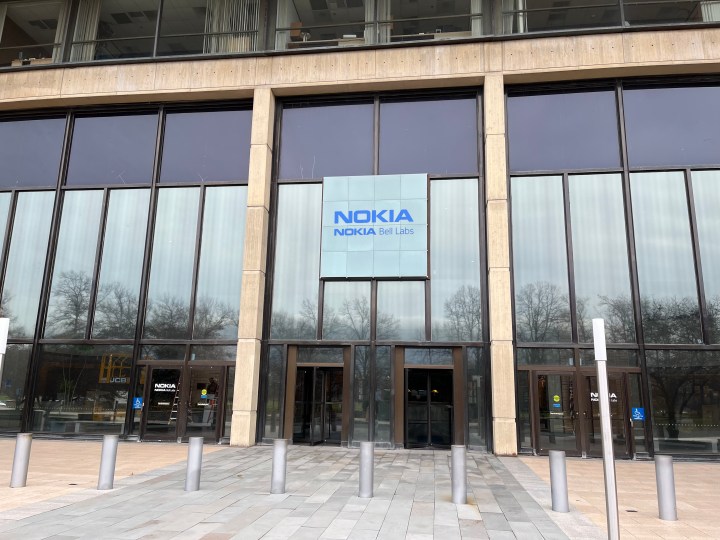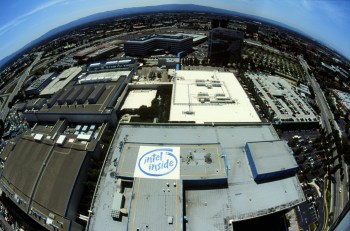
What does Nokia Bell Labs look like 75 years since the transistor’s invention?
What does Nokia Bell Labs look like 75 years since the transistor’s invention?

We’re surrounded by transistors. They’re all around us. They’re in phones, car keys, microwaves, pacemakers and plenty more.
The transistor is a revolutionary piece of technology that helped create the world we see today. “I would put it on the level as fire in terms of its importance to what modern life is like today,” said Michael Riordan, physicist, science historian and co-author of “Crystal Fire: The invention of the Transistor and the Birth of the Information Age,” in an interview with Marketplace.
75 years ago, the transistor was born. To mark the anniversary, “Marketplace Morning Report” is exploring the systems of innovation that created a device that transformed the world. But we also wanted to know more about the company behind the transistor, Bell Labs, which is now owned by Nokia.
“Marketplace Morning Report” host David Brancaccio spoke with Peter Vetter, president of Core Research at Nokia Bell Labs, about the transformative power of the transistor and the company’s future endeavors. The following is an edited transcript of their conversation.
David Brancaccio: Now, they liked to call where you work now the “Idea Factory” in the old days. Under Nokia, you still running this kind of factory?
Peter Vetter: Oh, yes, absolutely. So solving hard problems, like at the time of the transistor, is still very much part of our DNA. Creating that creative environment of top-notch researchers to solve problems in communications, in IT and going after new applications.
Brancaccio: The old Bell Labs had the ability to let people just try stuff, and they could work quite a while working on projects that it wasn’t fully clear would pan out. That’s the nature of risk and innovation. But if someone came to you Mr. Vetter and said, “Look, I want to work on something, I have a hunch,” does the modern Bell Labs have that kind of leeway to give?
Vetter: Yes, we still today allow for exploration research. When a researcher comes to me, “Hi, I have here an intuition that there is a new way of solving the problem,” they can go after that, right? I mean, a very recent example is researchers came to me [and said], “We can create artificial, intelligent, accelerated processing to make very fast decisions using optical computing” and I say, “OK, this sounds good. This sounds like we are using our knowledge and scientific expertise in a new way.” So yes, they can go off after that and they get some time to explore the idea. We put them in contact with different experts so that they can really enrich the idea in that discussion. After some time they have to come back, of course. They have to show that they made progress, that they have gained new insights, before they earn the right to then enlarge the project. And out of these different exploration ideas, we then take bets. We say, “OK, here we’re really onto something, it solves a real world problem in the industry. Now let’s make it bigger, let’s really think it through.”

Brancaccio: Mr. Vetter give me a sense of scale. Nokia Bell Labs now is much larger than that campus upon which the transistor was invented in New Providence or Murray Hill, New Jersey.
Vetter: Yeah, so Murray Hill, New Jersey, is still the headquarters today. It’s still where we have the largest presence. That is also where I have my office. I’m traveling quite a lot, however, to other locations because we are a global research organization. We have an important Bell Labs facility in Espoo in Finland, close to the headquarters of Nokia, the current mother company of Bell Labs. But we also have research centers in France, in Germany, Belgium and U.K. But very much across that organization, we want to maintain that research culture of Bell Labs, as it has been proven successful for many innovations, including the transistor that we are celebrating today.
Brancaccio: Many people with their mobile phones now have learned a little bit about what’s called 5G. It’s fast, it certainly makes movies download faster, it has other attributes. Your people are working on 6G?
Vetter: We have seen in the industry that about every 10 years there is a new generation of networks that allows to incorporate new disruptive innovations and enhance the capabilities of the networks and the applications. So, yes, we are already 10 years ahead working on those innovations. And we expect that artificial intelligence will transform the way we design and enable applications but also the way we enable networks, networks with many more features and therefore complexity that we want to automate by the use of AI. And in the spirit of the celebration of the transistor and semiconductor technology, we are also looking into how can we accelerate the decisions taken by these AI accelerators in new ASIC design concepts. But then also enabling higher speeds in 6G, exploring new frequency ranges at 10 to 50 times higher frequency than what we use today in 5G. And that, again, will require new integrated circuits, new radio frequency materials, also, that enable the design of antennas, compact antenna systems with such things as radio on glass. The classic PCB — printed circuit board technologies — are not very suited for these very high subterahertz frequencies. So we need a new material that allows for creating systems at very low cost that can incorporate these high frequencies. And glass is a very interesting material for that purpose.
Brancaccio: And what’s this about Bell Labs working on a moon project?
Vetter: We like challenges, right? And we have a project enabling cellular network on the moon. So the challenge for us is making a network work in a very harsh environment with extreme radiation, with extreme vibration conditions for the launch of the system, and also extreme temperature ranges. So going for that challenge and then also applying that then to other environments, like mining or environments where there’s a lot of radiation like in nuclear power stations.

Brancaccio: The transistor turns 75 years old this week. When you come into work in the morning or at the end of your day, you walk right past the place where the first transistor was devised. Do you ever feel the energy at any level?
Vetter: Yes, absolutely. I mean, it makes me immensely proud to work at a place like that, where the transistor was invented, but also many other transformative inventions happened. The transistor kicked off a whole new field of semiconductor physics that led to such innovations as semiconductor lasers, as solar cells, as the CCD camera, again back to the mobile that allowed for digital cameras, something that was also awarded a Nobel Prize, just like the transistor.
There’s a lot happening in the world. Through it all, Marketplace is here for you.
You rely on Marketplace to break down the world’s events and tell you how it affects you in a fact-based, approachable way. We rely on your financial support to keep making that possible.
Your donation today powers the independent journalism that you rely on. For just $5/month, you can help sustain Marketplace so we can keep reporting on the things that matter to you.


















